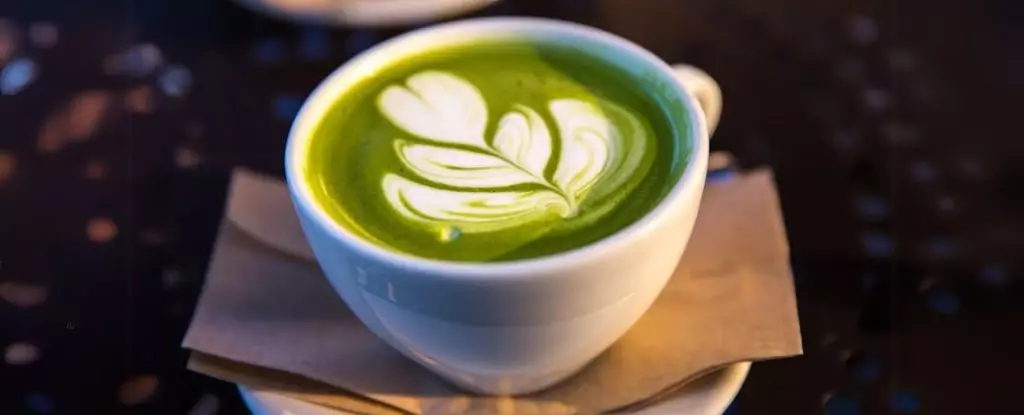Diving into matcha’s rich heritage, we discover its origins in China, where it first emerged as powdered tea centuries ago. This unique form of green tea gained popularity not just for its flavor but also for its health benefits, particularly among Buddhist monks who recognized its potential to enhance meditation practices. As the centuries rolled on, matcha made its way to Japan, where it became deeply intertwined with Japanese culture and aesthetics, particularly through the lens of the Zen tea ceremony. This transition transformed matcha from a simple drink into a symbolic ritual, representing mindfulness and tranquility. The meticulous preparation and consumption process in Japanese tea ceremonies has elevated matcha’s status to that of a cultural treasure, cherished not only for its physical benefits but also for its spiritual resonance.
From Cultivation to Consumption: The Unique Process of Matcha
Matcha’s preparation diverges significantly from that of traditional green tea, beginning with how the tea plants are cultivated. The camellia sinensis plants destined to become matcha are strategically shaded for several weeks before harvest. This method increases chlorophyll production and enriches the leaves with amino acids, particularly L-theanine, leading to that vivid green hue intrinsic to matcha powder. After the leaves are steamed to halt fermentation, they are meticulously dried and ground into a fine powder. This process ensures that when you consume matcha, you are ingesting the whole leaf, which is laden with antioxidants and other beneficial compounds.
Unlike conventional green tea, which steeped leaves release their nutrients into the water, matcha incorporates the entire leaf. This means that every cup of matcha embodies a concentrated source of health benefits, making it an appealing option for health-conscious individuals. However, this very aspect raises the question: can we genuinely trust the plethora of health claims associated with matcha?
Health Benefits: Evidence Over Hype
It’s thrilling to hear the buzz surrounding matcha’s purported health benefits—ranging from cancer-fighting properties to enhanced cognitive function. Rich in polyphenols, particularly catechins, matcha boasts antioxidant qualities that many deem crucial in combating oxidative stress. Still, a discerning look at the existing research reveals a somewhat mixed picture. A plethora of studies supporting these claims primarily stem from lab settings, often involving cells or animals, rather than extensive clinical trials involving humans. While preliminary findings are undoubtedly promising, we must tread cautiously, balancing hope with skepticism.
The caffeine content in matcha warrants a discussion of its own. Providing a moderate dose compared with coffee, matcha appeals to those wary of the jitteriness caffeine can provoke. The unique combination of caffeine and L-theanine promotes a calm alertness that many users find enjoyable. Combining a sense of alertness with relaxation—this duality positioned matcha as a favorite among busy professionals and students. However, the caveat remains: too much of anything can lead to negative side effects. A nuanced understanding of caffeine’s optimal dosage is crucial, and while one to three cups of matcha seems to be the safe recommendation, individual tolerance may vary significantly.
The Great Coffee vs. Matcha Debate
When squaring off matcha against coffee, it’s essential to examine their respective benefits and drawbacks. While both beverages boast antioxidant properties, coffee has undergone more extensive study, establishing clearer consumption guidelines. For individuals who thrive on higher caffeine levels, coffee may reign supreme, providing clarity and energy. Conversely, those seeking a gentler pick-me-up may find solace in matcha.
Another factor to consider is the potential impact on iron absorption. Both beverages, due to their content of polyphenols, may inhibit iron absorption from plant-based sources, posing potential risk for vegetarians or those with iron deficiency. Such nuanced dietary considerations point to the importance of timing when consuming these drinks in relation to meals.
A Personal Perspective: Choosing Your Brew Wisely
Ultimately, the choice between matcha and coffee hinges on personal preference and lifestyle. For those looking to diversify their beverage options while engaging in a mindful drinking ritual, matcha presents an exciting avenue. The allure of a healthful drink is heightened when it comes with a cultural narrative steeped in centuries of practice. On the other hand, individuals with a high tolerance for caffeine may find the robust taste and effects of coffee to be their cup of tea—so to speak.
In a world awash with ever-changing health trends, matcha indeed stands out—not merely for its vibrant color or its place in the tea ceremony, but for its unique blend of potential benefits and rich cultural essence. So whether you choose to sip matcha or savor coffee, the path to health is as much about personal preference as it is about the beverages we choose. Each drink carries its own narrative—one that deserves appreciation and understanding.


Leave a Reply